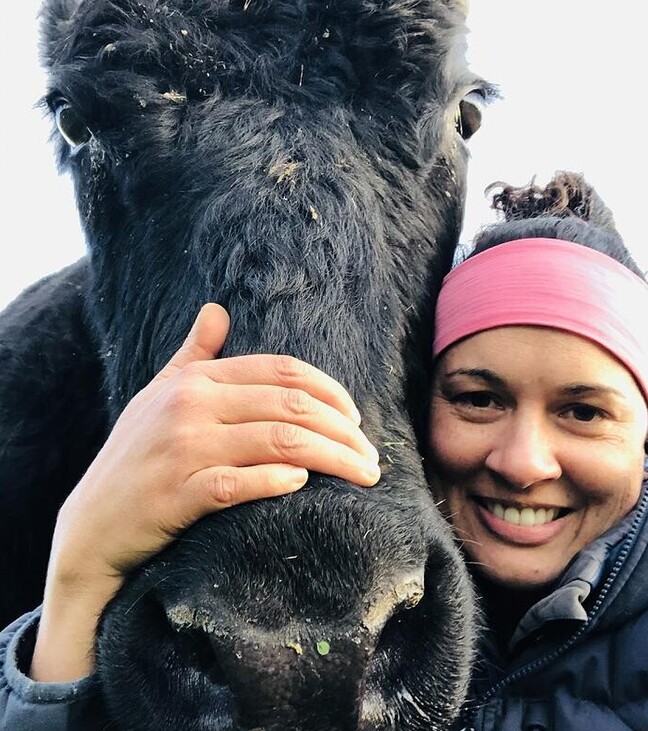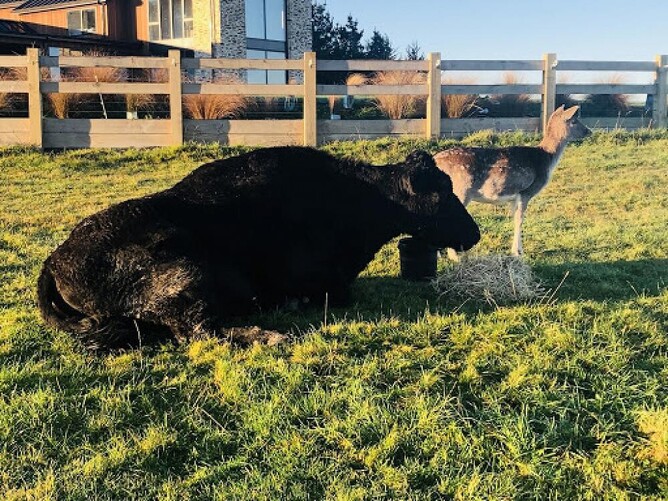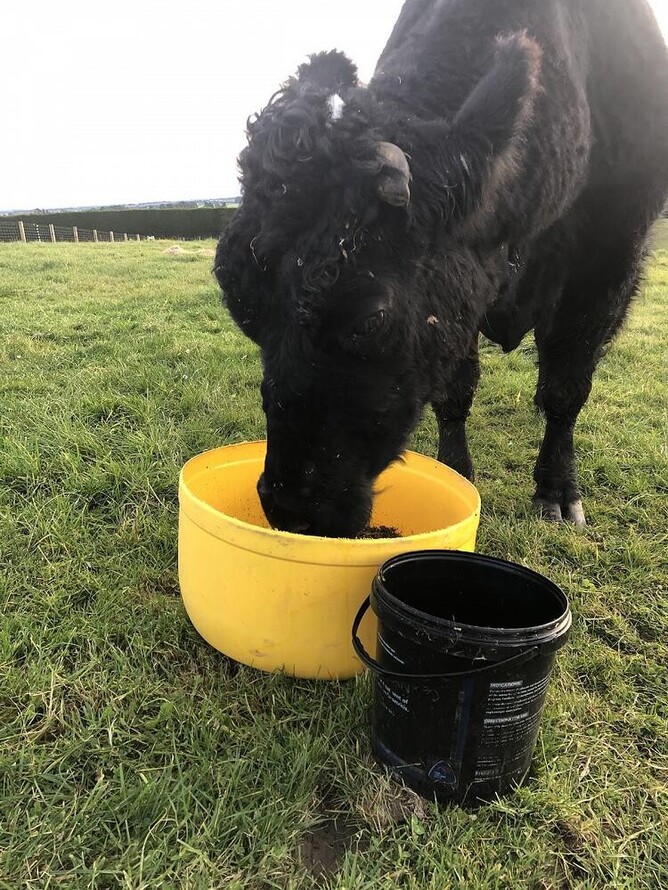When Vet Sunni's Yak went down with non-responsive Milk Fever-like signs, what was the diagnosis?
Most people who know me know I like to acquire animals. One of my most beloved acquisitions is my Yak cross, Batman. He was conceived from a trial carried out by LIC 15 years ago where they were looking at ways to reduce the number of inductions. By using Yak semen, cows could calve up to 3 weeks early. It sounded great in theory however with conception rates at 30% it wasn’t a feasible option.
I was a newbie scanner and scanned his mum in calf and questioned the farmer about what would happen to him after he was born. Four days after he was born, a box of beer was exchanged and he was mine. A small, feral, hairy, black thing soon turned into a 750kg teddy bear, otherwise known on our farm as a Turner.
Last week, things changed for Batman. He had been put into his wintering block or prison cell for the winter. No more grass, just baleage much to his disgust. My grazier noticed, while feeding out he looked a bit sad and stiff, he was struggling to walk on his back legs. He was sent out to grass and monitored.
I examined him and he was definitely struggling to walk, his back was arched and his legs were wobbly. He was trembling and teeth were chattering. I gave him a good dose of Metacam IV as an injury of some sort was suspected.
He got worse. He sat down and wouldn't get up. His breathing increased dramatically and he could hardly hold his head up. He started to look exactly like a cow with milk fever, severe s-bend in his neck and then head tucked into his side. His temperature remained normal so we ruled out an infection. Bloods were run at the clinic, nothing significant, his calcium level was completely normal. It was panic stations now, what was going on? He couldn't eat, drink or stand. He was going to die and I had no idea why.
That night we tubed him with a concoction from my truck, gave him whatever I could into his vein, made him comfy and said goodbye. A few tears shed (okay maybe a lot) and said a prayer. I felt like a crap vet, 17 years of vetting and I couldn't work out what was wrong with my own animal. Useless.
Lying in bed feeling helpless we went through all the signs and possibilities. When cases get complex and overwhelming you have to take a deep breath and get back to basics, reassess the situation and come up with the main problem. His main problem we decided was muscle weakness and we decided it had to be a toxicity. What kind of toxicity causes muscle weakness? We were thinking of poisonous plants but the signs didn’t fit, fatty liver with secondary problems but the bloods didn’t fit. Hayden then remembered a long time ago a colleague talking about some non-responsive milk fever cows which they suspected had botulism. After a quick Dr. Google search and flashbacks from vet school lectures, indeed all of his signs were fitting with botulism. The main take home point was death was inevitable. My daughter, so full of wisdom, was right, "Mum, Batman’s time has come".
Botulism has never been documented in NZ in cattle to date. There is no antidote available for this bacterial disease and it is not covered in the 10in1 vaccine he had. Clostridium botulinum is in the same family of bacteria as tetanus. It acts in the opposite way to tetanus, causing flaccid paralysis of muscles and eventually death as the lung muscles become paralysed. In cattle, they eat the preformed toxin produced by the bacteria, the more you eat the more likely and faster you will die.
Batman was still alive the next morning. Despite the grave prognosis I could not put him to sleep yet. Now it was time for some intensive supportive care to keep him alive until the toxin hopefully releases from the nerves of the muscles, which can take days to weeks.
His tongue was paralysed so he was tubed twice a day with warm water and various forms of energy. We noticed when tubing him, how easily we could open his mouth, I could open it with two fingers. My account at work and PGG racked up as I bought whatever I could to keep his energy levels up. His rumen completely shut down and he couldn't poo, another reason for a ruminant to die. His only saving grace was that he could stand when really forced, just, only for a maximum of 4 minutes twice a day.
Over the next few days, his breathing settled. He attempted to eat some food when I hand fed him and he could stand for 7 minutes. He was improving. He still required fluids every day. He had an array of feed brought to him, the weed whacker came out and fresh grass was cut daily and served to him. This continued for a few more days. Slowly but surely, each day he stood for longer, he could chew, although painfully slowly and stopping for a rest between chews and the most exciting thing, he pooed! His rumen started moving and I knew he was going to survive. He is still a little awkward when he walks but as he pushed the pony away from his feed to steal it last night I knew my Batman was back.
So the question remains, where did he get it from?
On further investigation with my grazier (who has Scottish ancestry) did not want to let some rather old, rank baleage go to waste and what better way to use it than to feed it to one of the Turners on the farm. This bacteria requires specific growing conditions which this particular bale we suspect unfortunately had. He’s thanking his lucky stars it all worked out in the end partly as he would have had to live with me never letting him forget it but also for not having to dig an Olympic pool sized hole!
Needless to say, Batman is never going back into the wintering block and I'm pretty sure I heard my grazier promise him Lucerne hay forever if he pulled through. Nothing like learning something new from your own animal. I’m proud to own probably the only Yak hybrid in NZ that survived the first suspected case of botulism in NZ!
- Sunita McGrath



